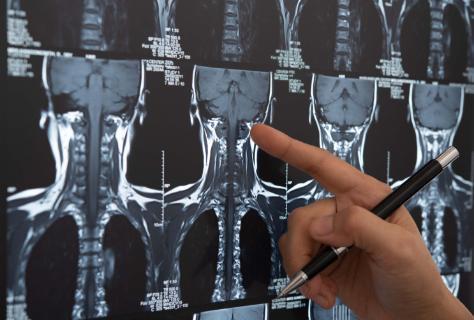Study by New York Medical College Researchers Finds Inhibition of Glucotoxicity Could Improve Recovery Following Spinal Cord Contusion Injury
Research found increased locomotor recovery and reduced loss of spinal cord tissue

A new study, recently published in Neurotrauma Reports, by several New York Medical College (NYMC) researchers found that inhibition of glucotoxicity following spinal cord contusion injury both increased locomotor recovery and reduced loss of spinal cord tissue.
In several tissues in the body, including the heart and brain, ischemia activates polyol pathway enzymes—aldose reductase (AR) and sorbitol dehydrogenase (SDH)—that convert glucose to sorbitol and fructose, causing oxidative stress and tissue loss. The NYMC researchers sought to determine whether activation of this pathway, known as glucotoxicity, also contributed to tissue loss after spinal cord contusion injury.
“A hallmark of polyol pathway activity in the peripheral nervous system is axonal swelling and degeneration, as observed in diabetic neuropathy,” said Richard J. Zeman, Ph.D., associate professor of cell biology and anatomy, and lead author on the study. “Therefore, we hypothesized that spinal cord injury might also activate AR, resulting in axonal degeneration and loss.”
“Our studies found that spinal cord injury can lead to increased glucose levels, which causes functional and structural damage via products of glucose metabolism generated from polyol pathways (glucotoxicity),” said Joseph D. Etlinger, Ph.D., professor and chair of the Department of Cell Biology and Anatomy. “Future studies may implicate diabetes in potentiating spinal cord injury.”
In the study, inhibition of glucotoxicity with polyol pathway blockers improved locomotor recovery and opposed Wallerian degeneration, implicating these agents as a potential therapeutic modality for spinal cord injury.
“In diabetes, excessive levels of sugar in the blood are toxic to tissues, including nerve,” said Dr. Zeman. “However, it is not appreciated that after spinal cord injury, tissue levels of sugar are also excessively elevated and toxic to spinal cord nerve tissue resulting in paralysis. This new view, demonstrated in our study, of how injury to the spinal cord evolves can lead to effective treatments for paralysis, as well as other neurological conditions.”
In future studies, the research team plans to further investigate the possible role of glucotoxicity in brain injury and learning and memory.
